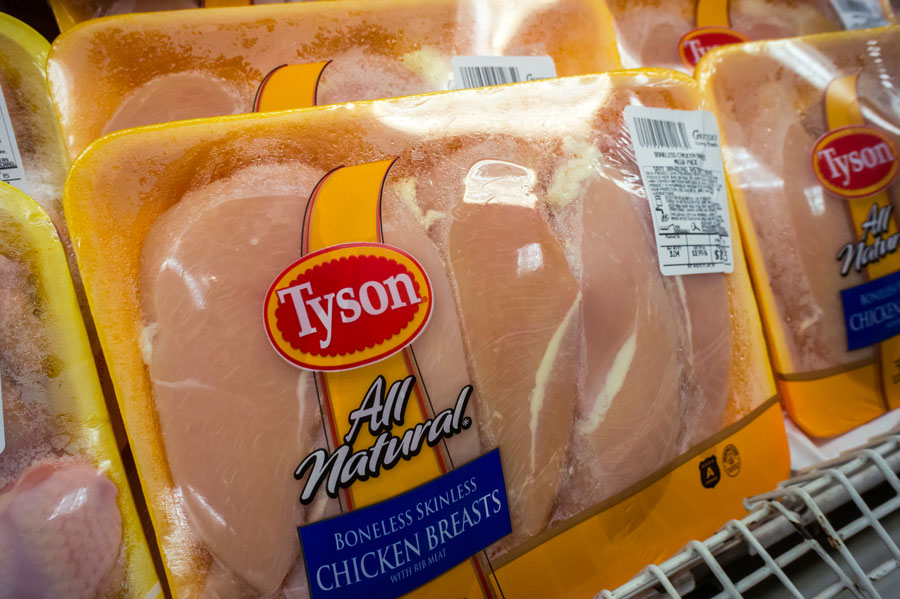
WASHINGTON, D.C. – In a significant policy shift, the U.S. Department of Agriculture (USDA) has formally withdrawn the Salmonella Framework for Raw Poultry Products, a proposed rule introduced in August 2024 under President Biden. The rule aimed to set enforceable limits on Salmonella levels and potentially classify certain strains and bacterial loads in chicken and turkey as adulterated – effectively barring them from sale.
The USDA’s Food Safety and Inspection Service (FSIS) announced the withdrawal on April 25, 2025, stating that it received more than 7,000 public comments from industry stakeholders, consumer advocates, scientists, and individual citizens. FSIS emphasized its need to reassess the scientific and economic foundations of the rule before proceeding.
What the Proposed Rule Included
Under the withdrawn proposal:
- Poultry processors would have been required to test for six Salmonella serotypes most often linked to human illness.
- Specific contamination thresholds would trigger product recalls or bans on sales.
- Facilities would implement extensive microbial monitoring, including statistical process control and paired sampling before and after chilling.
USDA estimates suggested the rule might have prevented approximately 125,000 cases of salmonellosis linked to chicken and 43,000 linked to turkey each year. Meanwhile, the Centers for Disease Control and Prevention (CDC) reports around 1.35 million Salmonella infections annually in the U.S., leading to about 420 deaths.
Support, Criticism, and Regulatory Rollback
Industry groups welcomed the decision. The National Chicken Council described the rule as legally flawed, scientifically weak, cost-prohibitive, and likely to increase food waste – asserting it would have had “no meaningful impact on public health”.
However, consumer advocates and food safety experts strongly criticized the move. Sandra Eskin, former USDA under secretary for food safety, said the withdrawal signals that health initiatives like “Make America Healthy Again” are not prioritizing public protection. Sarah Sorscher of the Center for Science in the Public Interest warned that removing stricter standards sends more contaminated products into the market.
Larger Implications and Context
- The proposal was a centerpiece of the Biden administration’s food safety strategy, following years of expert committee consultations and scientific risk assessments.
- Its withdrawal coincides with other regulatory rollbacks, including a six-month delay in enforcing Salmonella standards for breaded and stuffed raw chicken items and the dissolution of key USDA advisory committees.
- Agricultural officials say the rule posed undue burdens on small and medium-scale poultry processors, highlighting the tension between public health ambitions and industry feasibility.
Looking Ahead
FSIS officials say they will continue evaluating whether existing Salmonella standards need updates or revision. The agency also reaffirmed its commitment to reducing foodborne illness through alternative pathways i- ncluding enhanced monitoring and risk-based inspections.
As Long Island’s armed with a large poultry-consuming population and a network of local processors, residents are encouraged to remain vigilant about food safety practices at home – most notably, cooking poultry to safe internal temperatures and practicing proper handling.
What It Means for Long Island Consumer
The withdrawal creates a regulatory void at the national level, placing more responsibility on consumers. Local poultry sellers may continue current testing regimes, but there’s no longer an obligation to meet stricter federal standards yet. Cooking to 165°F (74°C) and avoiding cross-contamination remain primary safeguards against Salmonella.
Q&A: What You Need to Know About the USDA’s Salmonella Rule Withdrawal
Q1: Why did the USDA withdraw its proposed rule on Salmonella in poultry?
A: The USDA’s Food Safety and Inspection Service (FSIS) withdrew the rule after receiving over 7,000 public comments. The agency cited the need to further review scientific, legal, and economic concerns raised by stakeholders before proceeding with regulation.
Q2: What was the goal of the original rule?
A: The rule aimed to reduce Salmonella-related illnesses by declaring certain levels and strains of the bacteria in raw chicken and turkey products as adulterants, which would have prohibited those products from being sold.
Q3: How widespread is Salmonella in the U.S. food supply?
A: According to the CDC, Salmonella causes an estimated 1.35 million infections and around 420 deaths annually in the United States, with poultry being a leading source.
Q4: Will the rule be reintroduced in a different form?
A: FSIS has indicated that it will evaluate whether to revise or update its existing Salmonella performance standards, but there’s no confirmed timeline for a new proposal.
Q5: What can consumers do to protect themselves from Salmonella?
A: Safe food handling is essential. This includes cooking poultry to an internal temperature of 165°F, avoiding cross-contamination, washing hands and surfaces, and not rinsing raw poultry.
Q6: Did the poultry industry support or oppose the rule?
A: The National Chicken Council and other industry groups opposed the rule, calling it scientifically flawed, costly, and ineffective at improving food safety.
Q7: How did food safety advocates respond to the USDA’s decision?
A: Consumer groups and former USDA officials criticized the withdrawal, warning that it weakens consumer protections and leaves Americans more vulnerable to foodborne illness.
Q8: Are certain types of poultry—like organic or free-range—safer?
A: Not necessarily. While some consumers prefer organic or free-range products, these poultry products can still carry Salmonella and require the same food safety precautions.
Q9: How does this affect poultry producers on Long Island?
A: Local processors and sellers may continue following existing safety standards, but they are no longer obligated to meet the stricter thresholds that the withdrawn rule proposed.
Q10: Could this lead to more recalls or food safety incidents?
A: Without the rule in place, contaminated poultry products may still enter the food supply, increasing the risk of recalls and illnesses. However, FSIS says it will continue monitoring and may pursue future updates.


